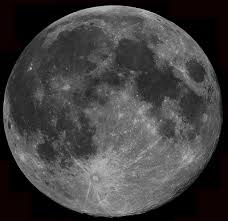Playing is Learning
The Maria of the Moon
December 9th, 2014
| Ads | ||
|
Play the Challenge
|
||
|
A New Word is Coined A new Character is revealed A new Game is Afoot |
An Edutainment Adventure Based on Three Rounds of Investigations
|
|
|
Welcome to the World of PROFESsee™by seeCOSM™ PROFESsee™ is my title. I am the perpetual learner, in pursuit of knowledge, wisdom and truth. I derived my name from professor |
 |
|
|
The Moon's maria are likened to the seas that we have on Earth. However, these are just semblances, not actual seas but they are named so because they appear that way when we view the Moon from the Earth. It is common for anybody out there to think that the Moon is just any other star and the only disparity between the two; its size. However, from another school of thought, it is said that it actually reflects the light that is shone upon it by the Sun. Surprisingly, this lunar body has a lot more than you could imagine. Just like the Earth it has a compact composition of mineral rocks. The Moon's surface also has some wonderful topographical features that have been formed as a result of volcanism. Some of these are the mares of the Moon, which from the Earth have been mistaken as real masses of water bodies. With more Apollo missions, it came to the scientists’ realization that they are large plains, which are basaltic in nature. In the satellite images, they have always been detected as dark surfaces since they lack reflective capacity due to their rich composition of iron mineral. There are a number of them and they occupy about 16 percent of the Moon’s surface. Several studies have been done to determine the age of these mares using radiometric dating techniques. Results from these tests have shown that most of them date back to more than 5 billion years ago. Depending on their chemistry composition, mare basalts are classified into three categories. The classification is based upon which element is abundant among the constituents. The groups include high titanium basalts, low titanium basalts and very low titanium basalts. Lunar basalts with very high concentrations of Titanium are less common compared to their counterparts. Among the explored mares, an extraordinary group exists, one that is exceptionally rich in Potassium, some rare Earth metals and Phosphorus. Contrary to the terrestrial basaltic plains, the lunar ones do not contain water in any form whatsoever. This is because they lack minerals that bear Hydrogen such as Amphiboles and Phyllosilicates that are found in the terrestrial ones. Image courtesy of: http://www.daviddarling.info/encyclopedia/M/Moonwater.html |
||
Latest News / Events
E-mail [email protected]
The Professee™ Newsletter Beta
http://www.seecosm.com/
http://www.seecosm.com/

